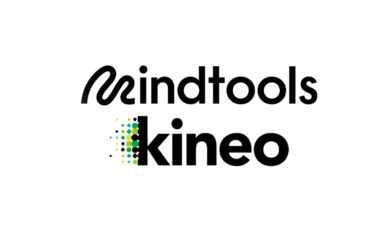 What has Leonardo da Vinci got to do with creating an engaging marketing campaign or reducing your company’s carbon footprint? Quite a lot, if you ask Rowan Gibson, author of a new book called “The 4 Lenses of Innovation: A Power Tool for Creative Thinking.”
What has Leonardo da Vinci got to do with creating an engaging marketing campaign or reducing your company’s carbon footprint? Quite a lot, if you ask Rowan Gibson, author of a new book called “The 4 Lenses of Innovation: A Power Tool for Creative Thinking.”
Leonardo da Vinci epitomizes the idea of the Renaissance man. As well as being a painter, he was a mathematician, an architect, a musician, an inventor, and more besides. There seemed to be no end to his ingenuity, no boundary to his creative ambition.
The Renaissance period (from the 14th to the 17th centuries) was when human accomplishments began to be recognized as just that: the result of human endeavor and imagination, rather than the product of divine intervention. This new view of what humans could achieve led to a torrent of technological, artistic and cultural innovations.
In his book, Gibson introduces four lenses through which we, in the 21st century, can emulate the mindset of Renaissance people, becoming more innovative and creative in our problem solving and decision making.
The four lenses are: challenging orthodoxies, harnessing trends, leveraging resources, and understanding needs. Each of them are explored in depth in the book, which is full of colorful illustrations that complement the subject matter and make it an easy, engaging read.
There are lessons to take away at the end of each chapter and lots of relevant case studies. For instance, the late Steve Jobs is cited as someone who challenged orthodoxies. Jeff Bezos of Amazon is mentioned as someone who successfully harnesses trends.
While the book is packed with useful information, Gibson sums up how to use the four lenses in just one word: systematically.
“Don’t just leave things to chance,” he warns, in our Expert Interview podcast. “Don’t sit together around a table and say, ‘Okay, let’s brainstorm,’ because all you’re going to get is ideas, usually, that are as dull as dishwater.”
Instead, the lenses should be used explicitly and methodically, Gibson advises. He offers insight from his own use of this “power tool.”
“I split up a group of people into smaller teams. I have the orthodoxies team, the trends team, the resources team, and the customer needs team, and then I give them a bunch of exercises that are going to stretch their thinking along new lines and enable them to use those lenses, those perspectives, to look at either the world or a particular situation or a problem.”
He gives an example from his work with a chocolate company, which was looking to reduce the landfill waste it produced.
“We wanted to reduce it to zero from where we were [at that time], which was like a thousand tons a year or something. This was a big chocolate company. We got together for two days and we used the four lenses. We totally solved the entire problem. Their waste going to the landfills went down to zero by using the lenses to come up with new ideas,” he recalls.
“So use it systematically. Develop new insights with the lenses and then crash them together. Take an orthodoxy, a trend, a customer need, a different resource and see if the intersection of those insights gives birth to some great new idea or opportunity.”
How does that work in practice? In this audio clip from our Expert Interview podcast, Gibson outlines an eight-step process for reaching breakthrough moments, whichever lens you’re using.
Listen to the full Expert Interview in the Mind Tools Club ¦ Install Flash Player.
If you’re stuck on a creative project, you may well find inspiration in “The 4 Lenses of Innovation.” At the very least, you’ll be able to brush up on Renaissance thinking and ponder how the likes of Leonardo, Galileo and Francis Bacon might have tackled your current dilemma.
How do you spark creativity in your team? Join in the discussion below!




